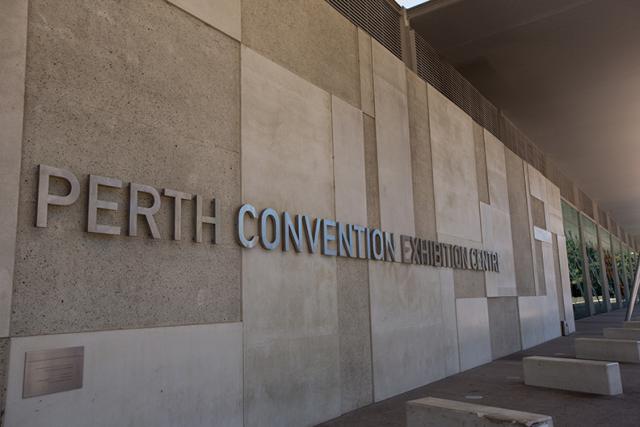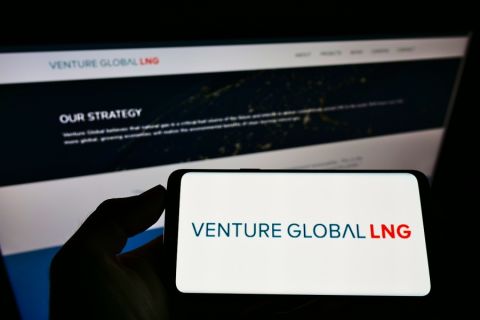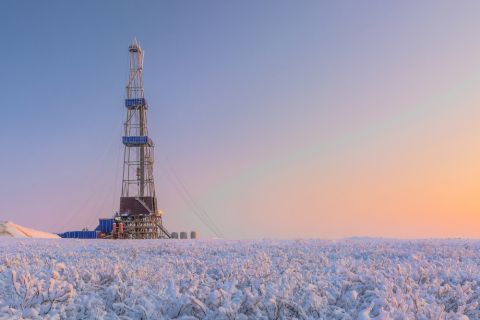
PERTH, Australia—The Australasian Oil and Gas (AOG) conference kicked off with a bang on March 13 as climate change protesters ambushed the opening keynote, prompting both Western Australian petroleum minister, Bill Johnston, and Woodside COO Meg O’Neill to take the gloves off in response.
Just before Johnston was due to open the conference, about 20 climate change protesters stormed the stage chanting slogans targeting Woodside and Chevron, prompting Johnston to “depart from prepared remarks” in retort to the demonstration.
The protest emerged against the backdrop of a standoff between the Environmental Protection Agency (EPA), the Western Australian government and industry after the EPA was accused of exceeding its mandate last week by fingering Western Australia’s oil and gas industry as a major catalyst for increased CO2 emissions—rising 27% between 2000 and 2016. This prompted a backlash from both WA Premier Mark McGowan and Perth-headquartered independent Woodside.
“It’s a bit unreasonable for us to enjoy a high-standard of living based on our abundance of energy but then say that people elsewhere in the world should be denied that same right,” Johnston said. “So, while there is no question that we need to deal with climate change, the idea that we can just abandon emerging economies to our north is just wrong.”
Johnston said the EPA guidelines were not endorsed by the Western Australian government, which was not bound by their directives and would make decisions accounting for economic and social impacts on the state.
“LNG has a role to play as a transition fuel around the world. Exporting WA LNG to places like China helps to reduce global emissions and we want to continue to grow these markets. We are absolutely determined to support job creating LNG projects, like Browse and Scarborough, and as a responsible government we must ensure projects like these are given long-term certainty.
“The McGowan government is a strong supporter of these projects and we have been working constructively with industry for a long time to get them across the line. We would not adopt a policy that threatens jobs or puts WA out of step with the rest of the nation on greenhouse matters. Along with the Premier, I look forward to consulting with representatives of the LNG industry to give them the certainty they need and identify a clear way forward.”
Citing Woodside’s 40,000 barrels of oil per day or greater Enfield project— expected to come online this year—and a second train at Pluto LNG on the North West Shelf, Johnston said the WA government was working to promote Perth as a “global oil and gas hub like we’ve seen in Houston and Aberdeen.”
“This is an exciting time to be involved in the oil and gas industry in WA and you can be sure the government of Australia is keen to partner the business in this State to continue to support this exciting industry.”
O’Neill said Woodside and its JV partners plans for a seven-train LNG production centre on the Burrup Peninsula represented a “scale so big”, that eventually 20 Tcf to 23 Tcf of dry gas resources would exceed the entire volume processed through the Karratha Gas Plant since its start-up.
“By bringing the Scarborough and Browse resources through these facilities as anchor tenants, we will be in a position to facilitate the potential development of smaller gas reserves that would otherwise be stranded. Arrangements, common to North Sea and Gulf of Mexico operators, will see contractors and service firms developing new business models as a way to lower costs and keep the local industry moving forward, but it’s the first time in Australia that gas processing facilities have been opened up to other resources,” O’Neill said.
However, she said it had been “disappointing and concerning” that the Environmental Protection Authority had, without consultation, issued a Greenhouse Gas Emissions Guideline that could “jeopardise jobs and investment in this State and the development of a fuel sources that is a vital part of the global response to climate change.
“Alarm bells should be ringing well beyond our industry as the EPA Guideline provides a roadmap for those wishing to mount legal challenges to any industry projects on the grounds of their emissions. The EPA’s intervention is out-of-step with Australia’s emissions reduction targets and has added to the confusion in the national climate policy debate.”
She added that the EPA was “wrong to intervene at a state level and they were wrong to volunteer up a policy that is effectively “net-zero immediately” on projects in WA.
“If this guideline is allowed to stand, it leaves WA unfairly exposed and at a competitive disadvantage to other states.”
She added that the government “should be prepared to legislate, if necessary, to clear up the confusion caused by the EPA.”
At stake was $40 billion in capital expenditure on the Burrup Hub, the creation of 5000 jobs during the construction phase, 2000 direct jobs during operations and “thousands more throughout the supply chain”.
But time was of the essence as there was a “global race to take advantage” of projected LNG demand in Asia within the next decade with LNG projects already sanctioned, or awaiting FID, in the U.S., Canada, Qatar, Nigeria and Mozambique.
“Projects that can contain costs by bringing new resources through existing and proven facilities, will have a head start. That’s what we’re trying to do on the Burrup Hub, building on our strengths to capture an advantage in a very competitive global market. And that’s why we have set ambitious timelines, so we can deliver LNG right where it is needed.
“And a lot is riding on this, for this state and this nation.”
Recommended Reading
Venture Global Gets FERC Nod to Process Gas for LNG
2024-04-23 - Venture Global’s massive export terminal will change natural gas flows across the Gulf of Mexico but its Plaquemines LNG export terminal may still be years away from delivering LNG to long-term customers.
US EPA Expected to Drop Hydrogen from Power Plant Rule, Sources Say
2024-04-22 - The move reflects skepticism within the U.S. government that the technology will develop quickly enough to become a significant tool to decarbonize the electricity industry.
Exclusive: ‘Regulatory Tsunami’ a Top Priority for American Producers, Says AXPC’s Bradbury
2024-04-22 - Regulatory considerations have significant implications for how oil and gas companies evaluate risk, and it’s a top priority for American energy producers right now, said American Exploration & Production Council CEO Anne Bradbury at CERAWeek by S&P Global.
Biden Administration Criticized for Limits to Arctic Oil, Gas Drilling
2024-04-19 - The Bureau of Land Management is limiting new oil and gas leasing in the Arctic and also shut down a road proposal for industrial mining purposes.
Exclusive: The Politics, Realities and Benefits of Natural Gas
2024-04-19 - Replacing just 5% of coal-fired power plants with U.S. LNG — even at average methane and greenhouse-gas emissions intensity — could reduce energy sector emissions by 30% globally, says Chris Treanor, PAGE Coalition executive director.




